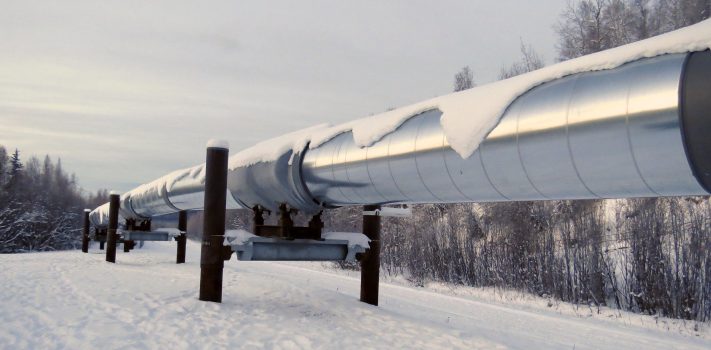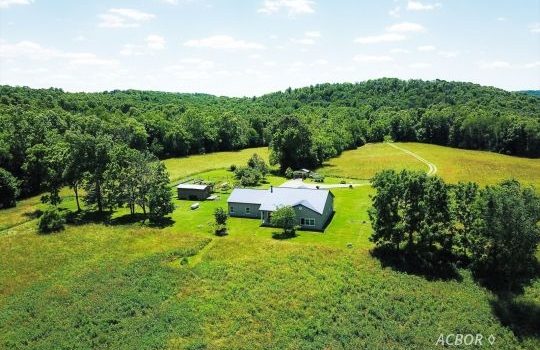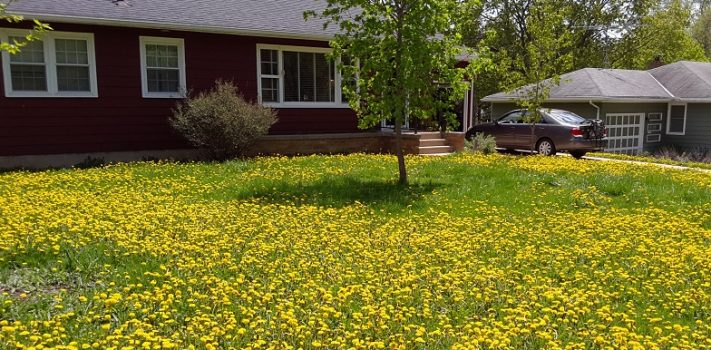(Continued from Part 2. This concludes the article.)
Hopniss-Apios americana
Hopniss is in the legume family, and produces edible tubers. In southern climates the season may also be long enough for it to produce edible pods resembling beans. Some plants in the bean family can cause allergic reactions and so can hopniss. Most people are not affected but you will want to start with a small serving. This is a plant that I am still looking for so I can give it a try. Hopniss was an important food crop for native peoples and has 3 times the protein of potatoes. I do not have a full nutrition profile for hopniss.
Prairie Turnip-Psoralea esculenta
Prairie turnip was a staple food of the plains tribes, and is still harvested to this day as a traditional food. I’ve never tried it but know of it and wanted to throw it in for our more westerly readers. The rest of us will probably have to purchase seeds and attempt to grow them in the garden if we want to try them. Many people consider it a delicious food item.
Nutrition Facts
|
Serving Size
|
100g
|
Daily Value
(%) |
|
Calories
|
156 |
8% |
|
Total Fat
|
.4g |
1% |
|
Saturated Fat
|
– |
– |
|
Total Carbohydrate
|
36g |
13% |
|
Dietary Fiber
|
8g |
29% |
|
Protein
|
2.6g |
5% |
Herbs: Get Your Vitamins!
Purslane-Portulaca oleracea
If you are a gardener, then you’ve seen purslane. It loves to colonize bare open soil in mid-summer. This is one of my favorite “weeds” because it tastes so good. I always leave a patch of it growing in my garden and munch on it while working. It has a crispy, succulent texture with a mild sweet flavor, and in hot weather has a bit of a lemony hint (due to an acid in the plant produced in warm weather). Purslane is high in vitamin C as well as other vitamins.
Miner’s Lettuce-Claytonia perfoliata
I’ve thrown Claytonia in here as a shout-out to the West Coast readers where it is the most prevalent. There are other species of claytonia that can be found elsewhere. They are a cool season plant, and in zone 7 where I live they can be harvested in early-late spring and again in fall-early winter. Claytonia is my kids’ favorite salad plant. They will eat it straight out of the garden. It has a crispy succulent texture similar to purslane without the lemon tang. If you carefully clip the leaves, the plant will flush again for multiple harvests. I have purchased seeds from Johnny’s Selected Seeds and grown them in my garden. It is high in vitamin C (gold rush miners used to eat it to stave off scurvy), vitamin A, and is a good source of iron.
Wood Sorrel-Genus Oxalis
There are hundreds of plants in this Wood Sorrel group so there is almost certainly one available to you wherever you live in North America. It has a pleasant lemony taste because of the oxalic acid content. It is high in vitamin C. It is a fun plant to nibble on when taking a walk or hike, and my kids all seem to like it. You should not eat large quantities of it due to the oxalic acid content (oxalic acid is also present in common vegetables such as spinach), but it’s great as a garnish or added to a salad mix.
Ostrich Fern-Matteuccia struthiopterus
Ostrich ferns like to grow along creeks and rivers. They can spread via lateral rhizomes and form dense colonies. Because their young spring fiddleheads are considered a delicacy in the Northeast, some stands have been decimated by commercial harvesting for sale to restaurants. The fronds are harvested while they are still curled up like a “fiddlehead.” I received a few plants from a friend and I grow them as ornamentals on the shady side of my house and shed. I am careful to harvest only 2-3 fiddleheads per plant to ensure the plant has enough fronds to remain strong. They are very good stir-fried in a little oil with salt and pepper. If you like asparagus you will probably also like ostrich fern fiddleheads. From what I can find they are a good source of potassium, vitamin C, vitamin A, and iron.
Common Chickweed-Stellaria media
Chickweed is another plant that any gardener should instantly recognize. You’ve probably been pulling it out of your garden for years. It is a cool weather, cold hardy plant that likes cool, moist, and shady locations. It likes to live on the North side of my raised beds, compost bin, shed, and house. Even in the middle of a zone 7 winter I can go out today and find chickweed green and growing in my yard. It grows very slowly in the winter due to short daylight hours but often stays green all winter. You can cut the stems of the plant and it will regrow a new flush for multiple harvests. Chickweed is packed with nutrients, especially for such a diminutive plant. It contains vitamins A, D, B complex, C, rutin (a bioflavinoid), calcium, potassium, phosphorus, zinc, manganese, sodium, copper, iron and silica. In comparison with spinach, chickweed holds up extremely well. It’s got just as much iron, along with other nutrients. Chickweed also has medicinal uses within herbalism.
Dandelion-Taraxacum officinale
I don’t really have to describe this one. The flower, leaves, and root can all be used. The plant is loaded with vitamins and minerals (A, C, K, E, iron, potassium, calcium, and magnesium) and is also used in herbal medicine. There was too much information on nutrition and medicinal uses to fit in this brief profile. It was so important to European settlers as a food and medicine that they brought it with them to North America and that is why it grows in your lawn. It can have some bitterness that may not be palatable to everyone, but harvesting young leaves can minimize this effect. Mixed in a salad with other milder leaves it can add a nice depth of flavor. It’s simply too nutritious a plant to continue overlooking it. Give it a try.
Wood Nettle-Laportea canadensis & Stinging Nettle-Urtica dioica
Wood nettle (Laportea canadensis) is often confused or lumped together with stinging nettle (Urtica dioica) which is an introduced species from Europe. Both plants are worth knowing, and both have food value (very nutritious), and medicinal value. Wood nettle is considered by many to be the better-tasting of the 2 plants.
Wood nettle often grows in river floodplain forests in pure stands over several acres in size due to its spreading rhizomes. Stinging nettle prefers full sun and is often found in field borders, ditches, and open stream sides. The young shoots or new growth can be collected and cooked as a vegetable until mid-summer (cooking and drying destroy the stinging hairs). The leaves can be collected at any time to make a tea or broth. Both plants are considered very nutritious but almost all of the nutrition evaluations I can find are related to the European variety Urtica dioica. It’s basically a superfood. Vitamins: A, C, K, and several B vitamins. Minerals: calcium, iron, phosphorus, magnesium, potassium and sodium. Fats: linoleic acid, linolenic acid, palmitic acid, stearic acid and oleic acid. Polyphenols: kaempferol, quercetin, caffeic acid, coumarins and other flavonoids. Plus it contains all the essential amino acids.
Fruit & Berries-Get Your Yums!
Raspberries/Blackberries-Genus Rubus
The bramble family doesn’t need much introduction. Many of us grow these in our gardens and for many they are a gateway foraging plant. There are multiple varieties of raspberries and blackberries so it will make sense to learn the ones in your area. I’ve grown them for years in my yard, but through my foraging research I found three new species to try out. Besides being delicious, these berries are loaded with vitamins and antioxidants.
Serviceberries-Amelanchier spp
Serviceberries or Juneberries are wide ranging across most of North America but are more prevalent in the North. There are several species and they can range in palatability with the better varieties being considered very good. I have not yet had a chance to try them myself since I don’t know of any patches nearby, but I am attempting to grow some. These berries were prized by the native tribes where they are prevalent and were gathered by the bushel and dried for winter. The fruits are rich in vitamins A, C, and E as well as essential minerals, such as iron, calcium, potassium, manganese, and copper. Moreover, it’s also full of fiber, protein, flavonoids, and antioxidants.
Mulberry-Genus Morus
We have several varieties of Mulberry in North America; white, red, and black. They can sometimes be hard to distinguish since they cross with each other. The important part is to find one. They often sprout up along fence lines where birds land and “deposit” seeds. The fruit will remind you a bit of a blackberry with how it is shaped, and if you like blackberries you will probably like the sweet and tart mulberries. There can be variability in terms of flavor from tree to tree. We had one in our yard for a time, which tended to fruit in early summer before any other fruit was ready and it fruited heavily all at once (the fruit was also very good). I have heard reports of trees that are “everbearing” and fruit for an extended season. Like many fruits, mulberry is high in vitamin C, antioxidants, as well as minerals magnesium, calcium, iron, phosphorus, and potassium. Mulberry leaves also have medicinal uses in herbalism.
Pawpaw-Asimina triloba
Pawpaw is the largest native fruit in North America, and was once widely known and sought especially in the Southeast & Appalachia. It ranges from Florida to southern Ontario and west to eastern Nebraska. It has dropped from our modern diet because it does not ship or store well, so it is not suited to modern industrial agriculture. It is making a bit of a comeback in foodie circles. Pawpaws typically grow as a smaller understory tree usually around 30′ tall along forest streams and creeks, although I know of a large pure stand of several acres on top of a lookout hill.
In my area (zone 7) Pawpaws blossom in May, and the fruit is ripe in late August/early September. The fruit is about the size of a medium potato. The flavor is often described as a cross between a banana and a mango with a texture like custard. I find Pawpaws tend to divide opinions in regard to taste. Either you really like them or you don’t care for them. Try one out and cast your vote! Pawpaw fruit is rich in nutrients such as vitamin C, manganese, iron, and magnesium
Passion Flower/Maypop-Passiflora incarnata
Passion flower is a perennial climbing vine with beautiful flowers. It is hardy to zone 7 and you can often find seed packets for them in garden centers. They would do very well planted along a fence line. The plant has use in herbalism, including a relaxing sedative tea made from the flowers. The fruits develop late in the season. In zone 7 we did not have ripe fruit until October. If you have ever purchased a passion fruit at the grocery store it was most likely the related South American Passiflora edulis. The inside of a maypop looks very similar to passion fruit and is slightly larger than a golf ball. There are little juicy pulp sacks around the seeds within the fruit. The flavor is tropical, sweet, and slightly tart. Passion flower is a valued food and medicinal plant by the Cherokee tribe in the southeast.
Black Nightshade-Solanum nigra
Do not let the name scare you. Black nightshade is a relative of tomatoes, potatoes, & tomatillos. In fact the plant reminds me a lot of the tomatillo plants I have grown in appearance and growth pattern. Black nightshade produces small pea-sized berries which ripen from green to a purple/black. Green unripe fruit can contain high amounts of solanine and make you sick (just like potatoes that have turned green from light exposure). A plant given enough space in rich soil can be prolific and produce hundreds of berries on a 3’x3′ plant. The first time I tried a berry was a very odd experience. The flavor instantly reminded me of a tomato, but it was much, much sweeter. I wasn’t sure I liked it, but the berries have grown on me since. Besides eating them fresh, I think they would make a great addition to a savory sauce or salsa recipe. Nutrients include vitamins C & A, calcium, iron, and various antioxidants.
Warning: Atropa belladonna (Deadly Nightshade) is a similar but much less common plant that is dangerously poisonous. The plants are easily distinguished if you take the time to learn the differentiating features (Sam Thayer covers the differences in his book Nature’s Garden).
Syrups: Get Your Sweets!
Sugar Maple-Acer saccharum
Sugar maple is a Northern species and most prevalent in zones 3-5 due to its need for cold winters. It can be found further south in the Appalachians. Most people are familiar with the process of tapping maple trees for sap that can be boiled down to produce sweet syrup or sugar. Red maples can also be tapped, but the sugar maple has the highest sugar content. The process of making syrup was a favorite winter pastime of Daniel Boone and his wife Rebecca. The syrup-making process is beyond the scope of this article. The fresh sap can also be used as a beverage and is very good, cold from the tapping bucket. We have a large sugar maple (30″+ diameter) that we have tapped several seasons and usually get about 40 gallons if the weather is good for the sap run, which produces about a gallon of syrup.
Sweet Birch-Betula lenta & Yellow Birch-Betula alleghaniensis
These species of birch can both be tapped in a similar manner to maple trees although their season is about a month later. Birch syrup is much stronger in flavor. Oil of wintergreen can be distilled from the inner bark, and it used to be the commercial source for the flavor. The inner bark can also be used to make a tea which I have enjoyed a number of times on backpacking trips. Both species are more Northerly ranging similar to the Sugar Maple. Populations can be found further south in the Appalachians.
Conclusion
I trust that you find this information useful. Again, this article is just a starting point in your foraging education and practical knowledge.














